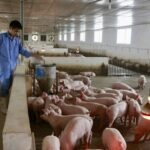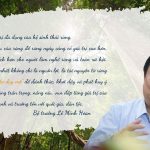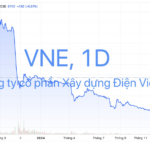On April 25, 2025, the Ministry of Agriculture and Environment, in collaboration with the Vietnam Academy of Agricultural and Rural Development Economics, the Industry Economics Department of the Central Strategy Policy Office, and Forest Trends, organized a workshop on “Status and Proposed Solutions for Land Concession in Forestry Companies.”
ATTRACTING SOCIAL RESOURCES INTO FORESTRY
Speaking at the workshop, Mr. Nguyen Quoc Tri, Deputy Minister of Agriculture and Environment, said that the policy on forest, garden, and agricultural land concession… was first issued in Decree No. 01/CP on January 4, 1995, on the concession of land used for agricultural, forestry, and aquaculture production in state-owned enterprises.
This was later replaced by Decree No. 135/2005/ND-CP dated November 8, 2005, on the concession of agricultural land, production forests, and water surfaces for aquaculture in state-owned farms. Currently, Decree No. 168/2016/ND-CP regulates the concession of forests, gardens, and water surfaces in Special-Use Forest Management Boards, Protective Forests, and State-owned Agricultural and Forestry One-Member Limited Liability Companies.
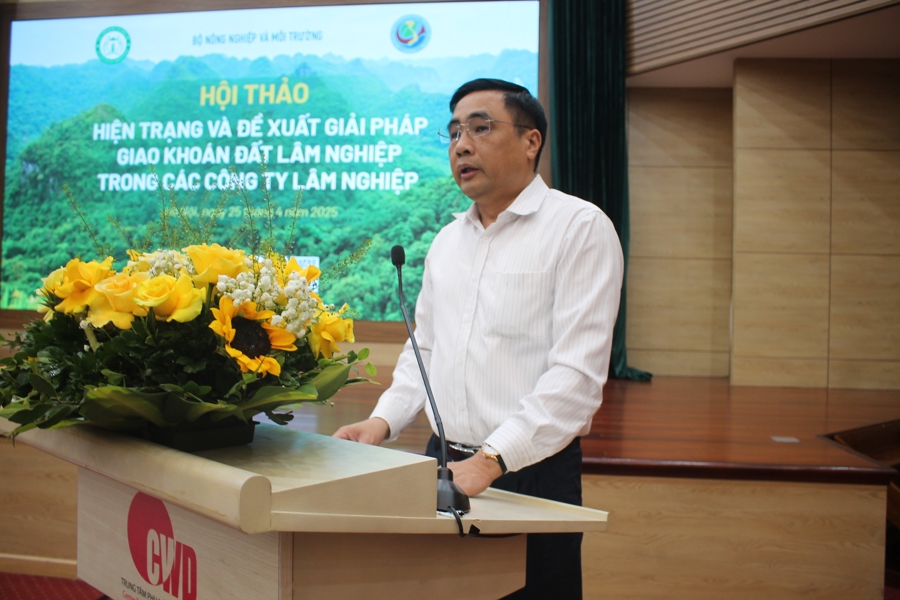
After 30 years of implementing the concession policy, forestry companies nationwide have implemented concessions on nearly 460,000 hectares, equivalent to about 27% of the total managed area. Of this, the concession of forests, forestry land, gardens, and aquaculture water surfaces under Decree No. 01/CP accounted for 68%, Decree No. 135/2005/ND-CP for 29%, and Decree No. 168/2016/ND-CP for only about 3% of the total concession area.
According to Deputy Minister Nguyen Quoc Tri, the concession has brought about positive changes in forest management and protection and forestry development, basically meeting the goal of mobilizing social resources, especially local people, to participate with state-owned forestry companies.
However, in the process of implementing the concession policy, there are still problems and limitations, especially in land and forest management associated with the rearrangement, renovation, development, and improvement of the efficiency of agricultural and forestry companies.
Therefore, on December 2, 2024, the Politburo issued Conclusion No. 103-KL/TW, directing: Continue to improve the regime, especially legal documents on land, management, and use of public assets to complete the rearrangement, innovation, and promotion of the development and improvement of the efficiency of agricultural and forestry companies.
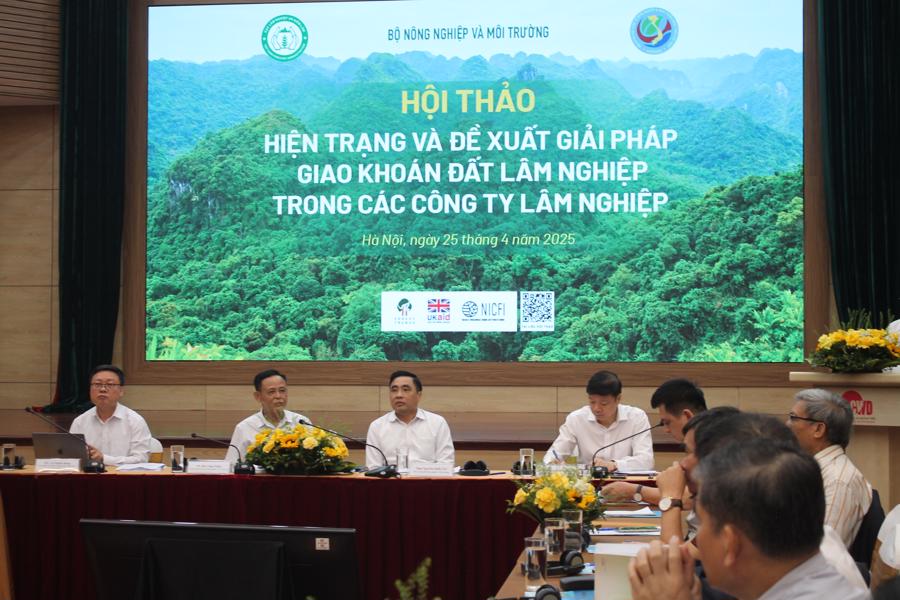
For more information, Mr. Nguyen Van Tien – Vice President of the Vietnam Academy of Agricultural and Rural Development Economics, said that the Academy has recently coordinated with many other units to research and build a report on “Researching, evaluating the current status and proposing solutions for land concession in forestry companies”. During the research process, field surveys were conducted at 26 forestry companies (out of a total of 169 forestry companies nationwide), ensuring regional and local representation (Bac Giang, Hoa Binh, Nghe An, Gia Lai, Binh Dinh, Dong Nai, Ca Mau).
The results showed that these 26 forestry companies are managing 292,632.47 ha, of which 290,008.19 ha are forestry land. 21 companies have implemented concessions on 121,722.59 ha, accounting for 41.59%. Of this: 50-year concession accounts for 3.1%; 20-year concession accounts for 28.04%; concession according to the production cycle of plants accounts for 8.13%; concession according to the production stage accounts for 8.18%; and annual concession accounts for 52.51%.
Most of the interviewed managers and local people said that the policy of forest land concession has attracted social resources to participate in the management, protection, and development of forests on concession land; creating many effective models of afforestation and agricultural-forestry combination on the concession area.
MANY INADEQUACIES, GIVING RISE TO VIOLATIONS
However, Mr. Tien mentioned many problems and violations arising in the issue of forest land concession. Accordingly, Decree 135/2005/ND-CP allows households receiving concessions to “build houses to watch over the concession forest”, “build temporary camps to protect production, store production tools and materials…”. However, the management of the concession area by the forest owners is not strict enough, leading to many households receiving concessions arbitrarily changing the land use purpose and building works on the concession land.
Many concession contracts have been established with loose content, not legally secure, making it difficult or impossible to handle when the receiving households violate the contract. The provisions on the rights and responsibilities of the forest-receiving households are unclear, making it difficult to determine responsibility in case of violations.
In addition, there is a lack of sanctions to regulate the handling of responsibilities of the community, groups of households, and households receiving forest protection concessions when violations of the law occur on the concession area. The concession areas with agricultural land and swidden fields interspersed with forests create difficulties in managing and protecting the forest area. The handling of assets on the land (plants, houses, temporary houses, drying yards, dug wells…) when liquidating the contract and recovering the concession area is still confusing, and it is not clear which regulations and agencies are in charge of asset valuation…
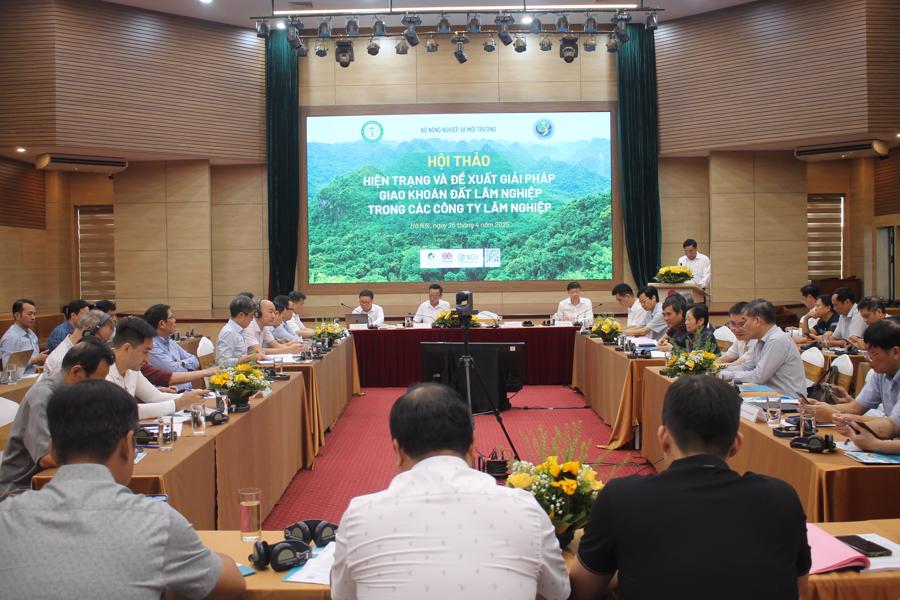
In the face of the above inadequacies, Mr. Nguyen Van Tien proposed that it is necessary to adjust and supplement the mechanism and policy in the direction: For the area that has been allocated/leased the right to manage and use the land to the company, let the company proactively implement business measures in accordance with the provisions of the law.
For the concession work, it is suggested that the State guide the policy framework, while the concession method, concession content, rights and obligations of the parties, and the role and responsibilities of the company and the receiving households, the method of profit sharing, and handling of violations… are agreed upon and implemented by the company and the receiving households in accordance with the provisions of the Civil Law.
“Management agencies need to strengthen inspection, guidance, and direction in the implementation of land management and use, land use right certificates issuance; handle cases of contract disputes, lease, lending, encroachment, disputes, joint ventures, investment cooperation in violation of regulations, and handle violations of land law. At the same time, develop a plan for the management and use of land of agricultural and forestry companies when returning it to the locality, associated with policies to solve housing and production land for ethnic minorities, ensuring social security”, Mr. Tien proposed.
From the perspective of opportunities to access the export market for agricultural and forestry products produced on forest land areas, Mr. To Xuan Phuc (Forest Trends) said that the EU’s Anti-Deforestation Regulations (EURD) will take effect from the beginning of 2026, and wood, coffee, and rubber products grown on forest land areas must meet the requirements for traceability and must comply with forestry laws. . Commodities grown on areas that have encroached on forest land since the end of 2020 will not have the opportunity to access the EU market.
“The existing shortcomings in land use and land concession by forestry companies indicate challenges in accessing this market in the future for commodities produced on current forest land areas,” Mr. Phuc warned.
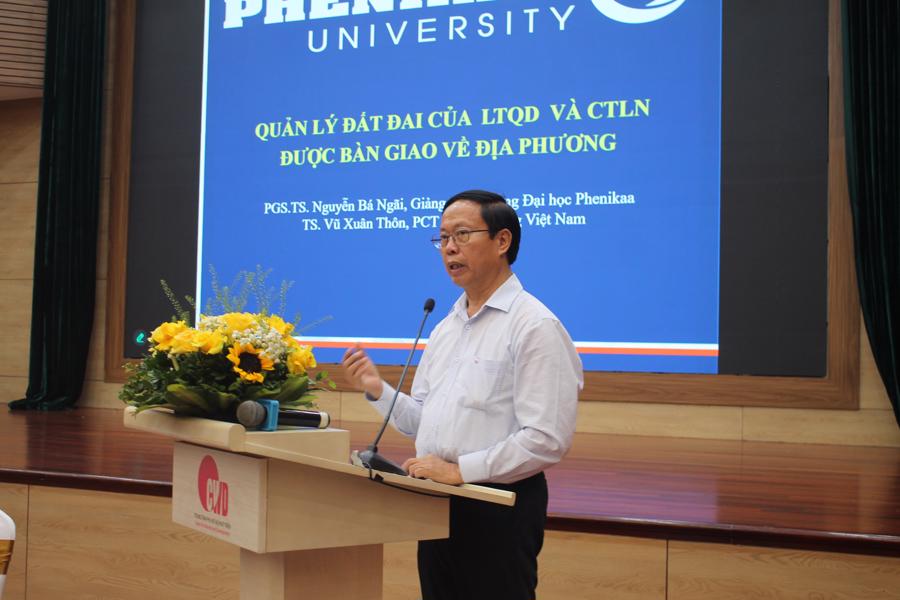
“The Ministry of Agriculture and Environment, together with the provinces, needs to create a legal corridor and simplify administrative procedures for agricultural and forestry companies to transfer forest land to the locality. Localities need to focus on completing the forest land inventory, resolutely handling disputed and encroached land areas. Localities must handle and resolve cases of overlapping issuance; proceed to build a plan for land management, granting, and use, and granting land use rights certificates.”
Concluding the workshop, Mr. Tran Quang Bao – Director of the Department of Forestry and Forestry, Ministry of Agriculture and Environment, said that from now until the end of the year, the forestry industry will build a comprehensive Decree, amending all other Decrees to remove obstacles in forestry, suitable for two-level administration and overcoming difficulties in practice that need to be handled quickly.
Therefore, the proposals from this workshop are expected to contribute to the improvement of policies, enhancing the effectiveness of management and use of forest land, and promoting the sustainable development of Vietnam’s forestry industry.
The Art of Optimizing Land Use: A Study on Adjusting Land Allocation Post-Merger
Deputy Prime Minister Tran Hong Ha has instructed the Ministry of Natural Resources and Environment to take the lead and collaborate with other relevant ministries, sectors, and local authorities to finalize a plan for adjusting land-use targets. This includes calculating the transitional phase for the implementation of land-use planning and plans when excluding the district level.
Peace: The Outstanding Highlights in Socio-Economic Growth
The impressive growth and socio-economic development highlights of Hoa Binh Province for the first nine months of 2024 serve as a crucial driving force for the region’s overall annual development plan success.
Minister Le Minh Hoan shares the ‘mantra’ to unlock the treasures of the forest
To unlock the treasure trove of the forest, Minister Le Minh Hoan has invoked the ‘magic formula’: developing the multifunctional values of the forest ecosystem. When that happens, the value of the forest must be 10 times, 100 times higher to be worthy of the phrase ‘golden forest’.




























